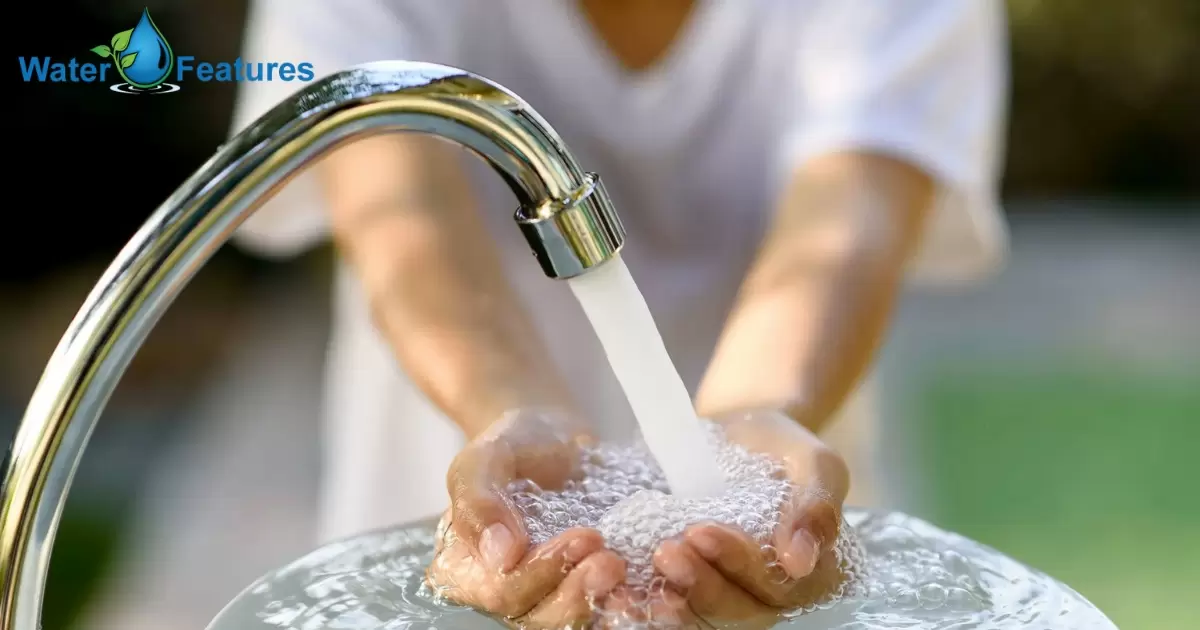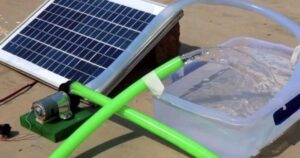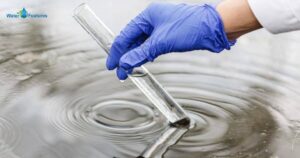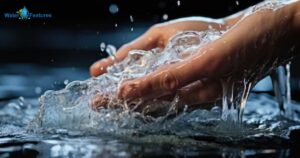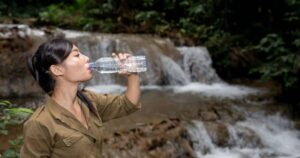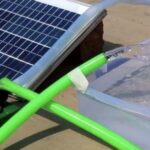Free water, often provided at public drinking fountains and refill stations, has become a popular alternative to tap water for those looking to reduce costs and minimize their environmental footprint. In contrast, tap water, sourced from municipal supplies, is a regulated and readily accessible option available in most homes and businesses. Both choices offer clean and safe drinking water, but the variations arise in their sources, treatment processes, and cost implications.
Water is a fundamental necessity for life, and the choices we make regarding our water sources can have a significant impact on our health and the environment. One such choice that’s been gaining attention is the decision between free water and tap water. So, let’s dive in and discover How Is Free Water Different From Tap Water? If you’re wondering why this choice matters, consider the environmental impact. Free water is associated with a reduction in single-use plastic bottle waste, making it a greener option.
On the other hand, tap water often involves the use of plastic bottles for storage and transportation, contributing to plastic pollution. In this article, we will explore the differences between these two sources of hydration and delve into the reasons why understanding these distinctions is essential. The convenience of free water stations for refilling reusable bottles can be a game-changer for those seeking a more sustainable lifestyle. The distinctions between these two water sources are more than just a matter of preference; they impact our planet and our future
Sources of Free Water and Tap Water
| Aspect | Tap Water | Free Water |
| Source | Municipal or Groundwater | Municipal, Springs, Filtration |
| Purification Process | Coagulation, Filtration, Disinfection | Filtration, Springs, Maintenance |
| Cost Implications | Water Bills, Infrastructure Costs | Free Access, Maintenance Covered |
| Environmental Impact | Plastic Waste, Energy Consumption, Chemical Use | Reduced Plastic Waste, Energy-Efficient Options, Local Sourcing |
| Health Considerations | Regulated Standards, Fluoridation, Potential Lead Contamination | Water Quality Monitoring, Potential Variability, No Fluoridation |
| Accessibility & Convenience | Available at Home, Consistent Quality, Faucet Access | Public Locations, Convenient for Refilling, Variable Quality |
Tap Water
It is subject to a series of rigorous purification processes to ensure its safety and quality. One of the concerns associated with tap water is the presence of contaminants, and it’s essential to note that tap water can sometimes have ammonia due to the treatment processes involved.
Surface Water: This includes rivers, lakes, and reservoirs, where water is collected, treated, and distributed to households.
Groundwater: Some regions rely on groundwater obtained from wells and aquifers. This water is often naturally filtered through geological layers.
Free Water
Free water, on the other hand, typically comes from public drinking fountains, water dispensers, or designated refill stations. The sources of free water may vary.
Municipal Sources: Some free water stations are connected to municipal water supplies, offering water treated in a manner similar to tap water.
Natural Springs: In certain locations, free water is sourced from natural springs, which are considered pristine sources of water.
Filtered and Purified Water: Some free water stations use advanced filtration and purification systems to provide clean, safe drinking water.
Purification Processes
Tap Water
The treatment of tap water involves several processes to ensure it meets safety and quality standards. These processes may include.
Coagulation and Flocculation: Chemicals are added to tap water to create flocs that trap impurities, making them easier to remove.
Sedimentation: The water is left undisturbed to allow the flocs to settle to the bottom, further removing impurities.
Filtration: Water passes through various filters, such as sand, gravel, and activated carbon, to remove remaining particles.
Disinfection: Typically, chlorine or chloramine is added to kill harmful microorganisms and prevent the growth of bacteria in the distribution system.
pH Adjustment: The pH level of tap water is adjusted to make it less corrosive to pipes and plumbing.
Distribution: The treated water is transported through pipes to reach homes and businesses.
Free Water
The purification of free water can vary depending on the source. Some free water stations use similar processes to tap water treatment, while others rely on alternative methods.
Filtration: Many free water stations use advanced filtration systems, including activated carbon, UV light, and reverse osmosis, to remove impurities and pathogens.
Natural Springs: In cases where free water is sourced from natural springs, it is often considered naturally pure and pristine, requiring minimal treatment.
Maintenance: Regular maintenance and cleaning of the free water station’s equipment are crucial to ensure water quality.
Cost Implications
Tap Water
Water Bills: Households connected to municipal water supplies receive monthly or quarterly water bills, which can vary depending on usage.
Infrastructure Costs: The cost of maintaining and upgrading water treatment and distribution infrastructure is often reflected in water bills.
Water Quality Testing: Municipalities conduct regular water quality testing to ensure safety and compliance with regulatory standards, which are funded through water fees.
Free Water
Free Access: Free water stations, as the name suggests, offer water at no direct cost to the user. This makes it an economical choice for individuals and reduces the financial burden of purchasing bottled water.
Maintenance and Operation Costs: The operation and maintenance of free water stations are typically covered by the entity responsible for providing the service, such as municipalities or organizations.
Donations: In some cases, free water stations may rely on donations from users or sponsors to support their operations.
Environmental Impacts
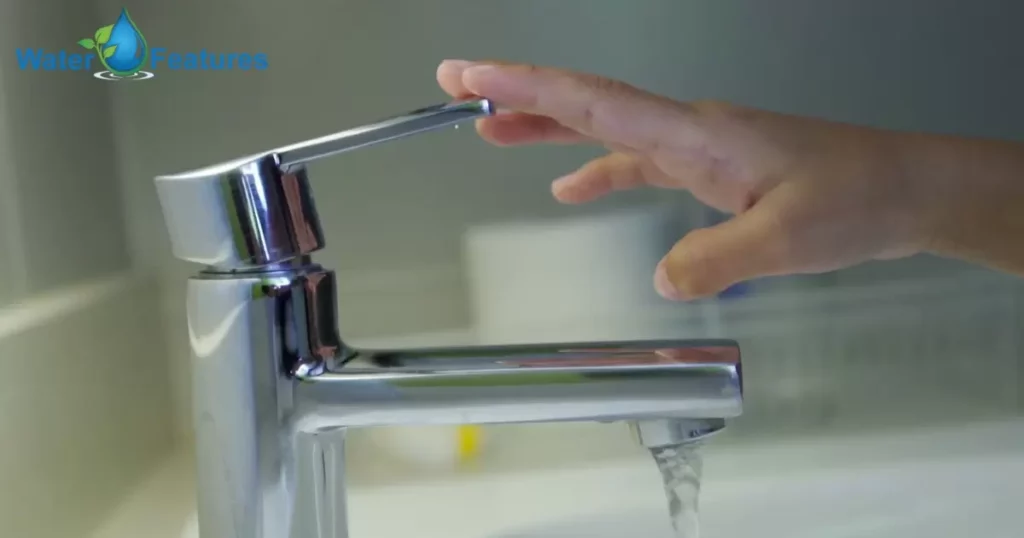
Tap Water
Plastic Waste: One of the environmental downsides of tap water is the use of single-use plastic bottles for storage and transportation. Bottled water is often packaged in plastic, contributing to plastic waste in landfills and oceans.
Energy Consumption: The energy required to treat, pump, and distribute tap water can have environmental implications, especially in regions with energy-intensive water treatment facilities.
Chemical Use: The chemicals used in the treatment of tap water, such as chlorine, can have environmental impacts if not properly managed and controlled.
Free Water
Reduction in Plastic Waste: Free water stations encourage the use of reusable water bottles, reducing the consumption of single-use plastic bottles.
Energy-Efficient Options: Some free water stations employ energy-efficient technologies, including solar-powered water dispensers, which can have a lower environmental footprint.
Local Sourcing: Stations that source water from natural springs promote the use of local resources, reducing the carbon footprint associated with transportation.
Health Considerations
Tap Water
Regulated Standards: Tap water is subject to strict regulations and quality standards imposed by local and national authorities. Regular testing ensures compliance with these standards.
Fluoridation: In some areas, fluoride is added to tap water to help prevent tooth decay, a practice endorsed by many health organizations.
Lead Contamination: Older plumbing systems may leach lead into tap water, posing health risks. Efforts are made to address this issue through infrastructure upgrades.
Free Water
Water Quality Monitoring: Responsible entities for free water stations often conduct regular water quality testing to ensure safety and compliance with health standards.
Potential Variability: The quality of free water can vary depending on the source and the maintenance of the station. It’s essential to choose stations with a good track record of water quality.
No Fluoridation: Free water typically does not have added fluoride, so individuals who rely solely on free water may miss out on this dental health benefit.
Accessibility and Convenience
Tap Water
Accessibility: Tap water is available in most urban and suburban areas, providing convenient access to drinking water in homes and businesses.
Consistency: The quality and availability of tap water are generally consistent, with little variation from one location to another.
Convenience: It’s easy to access tap water through faucets, which can be used for drinking, cooking, and other household needs.
Free Water
Accessibility: Free water stations are typically located in public areas, parks, and transit hubs, making them accessible to people on the go.
Convenience: Free water stations are convenient for refilling reusable water bottles, reducing the need to purchase bottled water.
Variability: The quality and availability of free water can vary depending on the location and the maintenance of the station. Understanding how Free Water Different From Tap Water can help you make informed choices about the water source that best suits your needs and values.
Conclusion
Both tap water and free water have their unique characteristics, benefits, and considerations. The choice between them often depends on personal preferences, location, and specific needs. While tap water is a reliable and regulated source of drinking water for many, free water stations offer an eco-friendly and cost-effective alternative. It’s essential to stay informed about the water sources available in your area and their quality to make the best choice for your health and the environment.
Regardless of the source, staying hydrated with clean and safe water is a fundamental requirement for a healthy life. Regular water quality testing, responsible maintenance, and environmental consciousness are essential elements in ensuring that everyone has access to the life-sustaining resource that is clean, safe drinking water. By making informed choices and supporting sustainable water practices, we can contribute to a healthier future for ourselves and the planet.
